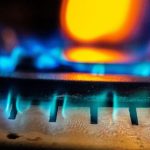
Natural gas stoves have become the latest flashpoint in America’s increasingly volatile political culture, after a top federal regulator publicly mulled over banning the appliances. “This is a hidden hazard,” the U.S. Consumer Product Safety Commission (CPSC) commissioner, Richard Trumka Jr., said in an interview. “Any option is on the table. Products that can’t be made safe can be banned.” Trumka quickly walked back that statement, saying that the agency wants to assess the hazards posed by indoor gas stove emissions but has no plans to ban gas stoves. But the question now is on the front burner — to what extent do gas stoves pose a health hazard to the average American? A growing body of evidence shows that gas stoves do indeed emit a wide variety of harmful pollutants into a home’s air, including nitrogen dioxide, carbon monoxide, benzene, formaldehyde, and even the sort of particulate matter that contributes to smog, experts say. “All of those are known to have negative impacts on human health,” said Dr. MeiLan Han, chief of pulmonary and critical care at the University of Michigan in Ann Arbor. Some of these pollutants are emitted through microscopic leaks that occur even when a stove is off, said Eric Lebel, a senior scientist with PSE Healthy Energy in Oakland, Calif. Others are generated by the stove’s blue flame. However, researchers… read on > read on >



























-300x200.jpg)










